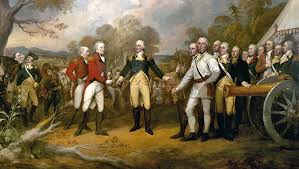“Continuity and Change in the 18th-Century States” Everything You Need to Know
Imagine a time when centuries-old traditions were both fiercely preserved and radically transformed—a period when established institutions coexisted with groundbreaking reforms that laid the foundations for modern governance. Did you know that while many 18th-century states clung to feudal legacies, they also embraced revolutionary ideas that redefined citizenship, law, and economic policy? In this comprehensive guide, we explore Continuity and Change in the 18th-Century States by examining how these states managed to maintain enduring traditions even as they evolved to meet new challenges. Whether you’re a history enthusiast, political science student, or simply curious about how historical forces shape modern society, this article will provide an in-depth look at the dynamic interplay between tradition and innovation in 18th-century statecraft.
Introduction: A Period of Paradox and Transformation
The 18th century was a time of striking contrasts. On one hand, many states sought to preserve longstanding cultural and political traditions; on the other, they initiated reforms that would eventually lead to modern democracy, economic modernization, and legal reform. This dual nature—Continuity and Change in the 18th-Century States—is key to understanding how societies transition from the old to the new.
A Captivating Hook
Imagine living in a society where ancient customs coexist with revolutionary ideas. How could a nation maintain its age-old traditions while simultaneously laying the groundwork for modern democratic institutions? This tension between continuity and change is at the heart of the 18th century. In this post, we will explore how states balanced these forces, the key factors that drove transformation, and the lasting impact of these changes on our contemporary world.
What This Article Will Cover
In this article, we will:
- Define “Continuity and Change in the 18th-Century States”: Offer a clear explanation of the concept and its essential characteristics.
- Explore Historical and Contextual Background: Trace the evolution of state structures in the 18th century, including the persistence of feudal traditions alongside emerging modern institutions.
- Delve into In-Depth Themes: Analyze the political, economic, social, and cultural dimensions of continuity and change through case studies, real-world examples, and detailed analyses.
- Discuss Importance, Applications, and Benefits: Highlight why understanding this dual dynamic is crucial for comprehending modern governance, legal systems, and social structures.
- Address Common Misconceptions and FAQs: Clarify prevalent myths and answer frequently asked questions about the evolution of 18th-century states.
- Review Modern Relevance and Current Trends: Explore how the balance between tradition and innovation continues to influence contemporary policy-making and cultural identity.
- Conclude with Key Takeaways and a Call-to-Action: Summarize the central insights and encourage further exploration and discussion.
By the end of this exploration, you will have a comprehensive understanding of Continuity and Change in the 18th-Century States and appreciate the intricate processes that have shaped our modern world.
What Are “Continuity and Change in the 18th-Century States”? A Clear Definition
Defining the Concept
Continuity and Change in the 18th-Century States refers to the dynamic process by which states maintained long-established traditions while simultaneously adapting to new political, social, and economic realities. It examines how historical institutions and cultural practices persisted, even as revolutionary ideas and innovations introduced profound transformations. This dual process is characterized by:
- Preservation of Tradition: The enduring influence of feudal structures, religious authority, and monarchic institutions.
- Adoption of Innovation: The implementation of Enlightenment ideals, administrative reforms, and early modern economic policies.
- Interplay Between Stability and Transformation: The balancing act between maintaining continuity for social order and embracing change to address emerging challenges.
Essential Characteristics
Institutional Persistence:
Many 18th-century states retained elements of their feudal past, such as traditional legal systems, social hierarchies, and religious institutions.Reform and Modernization:
Simultaneously, these states introduced reforms—like constitutional changes, legal codifications (e.g., the Napoleonic Code), and economic liberalization—that paved the way for modern governance.Cultural Resilience:
Despite rapid change, cultural identities, languages, and customs continued to play a central role in society, ensuring continuity amid transformation.Political Experimentation:
States experimented with new forms of representation and statecraft, such as parliamentary systems and merit-based bureaucracies, while still drawing on centuries-old traditions of sovereignty and authority.
Historical and Contextual Background
The Pre-Modern World: Legacy of the Ancien Régime
Before the 18th century, Europe was predominantly governed by the Ancien Régime—a system characterized by rigid social hierarchies, absolute monarchies, and feudal obligations. This system provided stability but also bred inequality and inefficiency.
Key Features of the Ancien Régime
Feudal Hierarchies:
Society was divided into estates—the clergy, the nobility, and the commoners—with privileges and responsibilities largely determined by birth.Absolute Monarchy:
Monarchs ruled with near-total authority, claiming divine right and relying on centralized power to maintain order.Religious Influence:
The Catholic Church played a significant role in governance and social life, reinforcing traditional values and customs.
Catalysts for Change in the 18th Century
The Enlightenment
Intellectual Revolution:
Enlightenment thinkers challenged traditional authority and promoted ideas of reason, individual rights, and scientific inquiry. This intellectual movement provided the ideological foundation for modern political and social reforms.Cultural Shifts:
Increased literacy, the proliferation of salons and coffeehouses, and the spread of printed materials helped disseminate new ideas, encouraging critical debate and paving the way for societal transformation.
Early Modern Reforms
Political Reforms:
The late 18th century witnessed significant political changes, such as the gradual transition from absolute monarchies to constitutional frameworks. Notable events include the Glorious Revolution in Britain and the various reforms initiated during the French Revolution.Economic Transformations:
The beginnings of the Industrial Revolution and the shift from mercantilism to early capitalism reshaped economic structures, creating new opportunities and challenges that required modern state responses.
Notable Historical Anecdotes
The French Revolution:
As one of the most dramatic examples of change, the French Revolution not only overthrew the old regime but also introduced revolutionary ideas that emphasized equality, liberty, and popular sovereignty.British Political Evolution:
Britain’s gradual move toward constitutional monarchy, highlighted by events such as the signing of the English Bill of Rights (1689) and the gradual expansion of parliamentary power, exemplifies the interplay between continuity and change.
In-Depth Exploration: Key Themes in Continuity and Change in the 18th-Century States
To fully grasp Continuity and Change in the 18th-Century States, we must explore the major themes that illustrate how these states managed to balance tradition with transformation. The following sections break down these themes using clear subheadings, real-world examples, and case studies.
1. Political Structures: Balancing Tradition and Innovation
The Persistence of Monarchy and Feudal Institutions
Enduring Legacies:
Despite emerging challenges, many 18th-century states maintained elements of their traditional monarchical and feudal systems. For instance, the Bourbon monarchy in France retained many ceremonial and administrative practices even as revolutionary ideas gained traction.Cultural and Religious Continuity:
Religious institutions and traditional customs continued to influence state governance, ensuring that the old order was not entirely discarded.
Emergence of New Political Ideas
Constitutionalism and Representation:
In response to the growing demand for political participation, many states began experimenting with constitutional forms of government. The gradual evolution toward parliamentary systems in Britain and the revolutionary experiments in France represent significant shifts toward modern democracy.Case Study: Britain’s Gradual Reform:
Britain’s evolution from an absolute monarchy to a constitutional system was marked by incremental reforms such as the Magna Carta, the English Bill of Rights, and subsequent parliamentary acts that expanded the franchise and limited royal power.
2. Economic Transformations: From Mercantilism to Early Capitalism
The Old Economic Order
Mercantilism:
The prevailing economic doctrine of the Ancien Régime emphasized the accumulation of wealth through state-controlled trade and colonial expansion. This system was deeply intertwined with feudal practices and the interests of the ruling elite.Trade and Tribute:
Economic power was often concentrated in the hands of a few, with significant wealth generated from monopolistic practices and state-imposed tariffs.
Shifts Toward Modern Economic Systems
Industrial Revolution:
The early stages of the Industrial Revolution began reshaping economic activity by introducing mechanized production, technological innovation, and increased efficiency. These changes laid the foundation for modern capitalism.Liberalization of Trade:
The move away from strict mercantilist policies toward more liberal trade practices allowed for increased competition, innovation, and the expansion of markets.Real-World Example: The Economic Transformation of France:
While France experienced significant turmoil during the revolution, its long-term economic reforms—such as the abolition of feudal dues and the reorganization of tax systems—paved the way for industrial growth and modernization.
3. Social and Cultural Change: Redefining Identity and Community
Social Hierarchies and the Rise of the Middle Class
From Aristocracy to Bourgeoisie:
The traditional social hierarchy, based on inherited privilege, began to give way to a rising middle class. This new bourgeoisie, driven by commerce and industry, demanded greater political influence and social mobility.Transformation of Citizenship:
Revolutionary ideas of equality and individual rights reshaped the concept of citizenship. The emphasis on universal rights challenged the old social order and contributed to the formation of modern civic identities.
Cultural Shifts and Intellectual Movements
Enlightenment Influence:
The intellectual currents of the Enlightenment promoted ideas that questioned the status quo and encouraged critical thinking. These ideas permeated all aspects of life, from education to art, fostering a spirit of innovation and reform.Artistic and Literary Revolutions:
Romanticism and other cultural movements that emerged in the late 18th century celebrated individual expression, emotion, and the sublime, reflecting broader societal changes. These artistic expressions served as both a critique of industrialization and a celebration of human creativity.Case Study: The Cultural Renaissance in 18th-Century Britain:
In Britain, the evolution of literature—from the works of poets like William Blake to the novels of Jane Austen—illustrates how cultural change intertwined with social and political evolution, reflecting a society in transition.
4. International Relations and Global Influence
The Shaping of Modern Europe
Diplomatic Reforms:
The 18th century witnessed significant changes in how states interacted with one another. Diplomatic practices evolved to balance power among competing nations, laying the groundwork for modern international relations.Influence on Global Politics:
The political experiments and reforms of 18th-century states had far-reaching impacts, influencing the development of international law, trade agreements, and global governance structures.Case Study: The Impact of the American and French Revolutions:
The revolutionary ideals that emerged in France and America not only transformed their own states but also inspired independence movements and democratic reforms worldwide.
Importance, Applications, and Benefits
Understanding Continuity and Change in the 18th-Century States is essential for several reasons, with its insights extending far beyond historical scholarship.
Shaping Modern Governance and Political Institutions
Foundations of Democracy:
The political reforms of the 18th century laid the groundwork for modern democratic institutions. Concepts such as representative government, the rule of law, and the separation of powers have their roots in this period.Policy and Institutional Design:
Lessons from 18th-century statecraft inform modern public policy and institutional design. By studying how states balanced tradition and reform, policymakers can craft strategies that promote stability and progress.
Economic Insights and Business Applications
Evolution of Economic Systems:
The transition from mercantilism to early capitalism offers valuable lessons in economic theory and practice. Understanding these shifts can help economists and business leaders navigate modern market dynamics and foster innovation.Entrepreneurial Spirit:
The rise of the middle class and the liberalization of trade during the 18th century spurred entrepreneurial activities. These historical insights continue to inspire modern business practices and the drive for economic advancement.
Social and Cultural Benefits
Redefining Identity:
The social transformations of the 18th century—particularly the redefinition of citizenship and social hierarchies—provide a rich context for understanding modern concepts of identity and cultural belonging.Cultural Literacy:
A deep understanding of the cultural shifts of the period enriches our appreciation of art, literature, and history, fostering a more informed and engaged citizenry.
Practical Applications in Education and Research
Interdisciplinary Learning:
Studying the continuity and change in 18th-century states integrates history, political science, economics, sociology, and cultural studies. This interdisciplinary approach enhances critical thinking and analytical skills.Academic and Public Discourse:
Insights from this period inform contemporary debates on governance, social justice, and economic policy. They provide a historical context that helps scholars, students, and the public understand current challenges and opportunities.
Addressing Common Misconceptions and FAQs
Even well-studied historical phenomena like Continuity and Change in the 18th-Century States are subject to misconceptions. Here, we address some common myths and provide quick answers to frequently asked questions.
Common Misconceptions
Misconception 1: “18th-century states were completely static and resistant to change.”
Clarification:
Although many traditions endured, the 18th century was also a period of significant transformation, marked by reforms that modernized governance, law, and social structures.Misconception 2: “Modern states have little in common with 18th-century states.”
Clarification:
Many principles established during the 18th century, such as constitutional governance, the rule of law, and market-based economic policies, continue to underpin modern political and economic systems.Misconception 3: “Continuity and change are mutually exclusive.”
Clarification:
In reality, continuity and change often coexist. The 18th century is a prime example of how long-standing traditions can persist even as new ideas and reforms reshape society.
Frequently Asked Questions
Q1: What does “Continuity and Change in the 18th-Century States” mean?
A: It refers to the process by which states maintained certain enduring traditions and institutions while simultaneously undergoing significant reforms in response to political, economic, and cultural pressures.
Q2: Which areas of society experienced the most change during the 18th century?
A: Major changes occurred in governance (e.g., the transition from absolute monarchy to constitutional systems), economic structures (e.g., the shift from mercantilism to early capitalism), and social organization (e.g., the redefinition of citizenship and social hierarchies).
Q3: How did Enlightenment ideas influence the continuity and change in states?
A: Enlightenment ideas promoted the values of reason, individual rights, and secular governance, which spurred political and legal reforms while coexisting with traditional cultural and religious practices.
Q4: Why is it important to study this historical period today?
A: Understanding how states balanced continuity and change in the 18th century provides insights into the evolution of modern political, economic, and social institutions, offering valuable lessons for addressing contemporary challenges.
Modern Relevance and Current Trends
Although Continuity and Change in the 18th-Century States is rooted in history, its legacy is still highly relevant to our modern world.
Political and Institutional Relevance
Modern Democratic Governance:
Many democratic institutions and legal systems draw directly on reforms and ideas that emerged during the 18th century. The evolution of constitutional monarchy and parliamentary representation continues to influence modern political structures.Policy Innovations:
Governments today can learn from historical examples of balancing stability with reform, using historical insights to inform strategies for institutional change and public administration.
Economic and Business Implications
Foundations of Modern Economics:
The economic transitions of the 18th century—from mercantilism to early capitalism—lay the groundwork for today’s market economies. Understanding these shifts helps economists and business leaders appreciate the origins of contemporary financial systems.Entrepreneurship and Innovation:
The rise of the middle class and the expansion of trade in the 18th century continue to inspire modern entrepreneurial ventures. Companies that embrace innovation and adaptability can draw valuable lessons from this era of economic transformation.
Social and Cultural Impact
Redefining Identity:
The reorganization of social structures in the 18th century has had lasting impacts on how citizenship and national identity are defined. Modern debates about equality, social justice, and cultural heritage are deeply rooted in the changes that occurred during this period.Cultural Preservation and Adaptation:
While traditional customs have persisted, new cultural forms have emerged in response to modern challenges. The dual forces of continuity and change continue to shape our cultural landscape, influencing everything from education to media.
Technological and Digital Developments
Digital Archives and Research:
Advances in technology have made it easier to access and study historical documents from the 18th century. Digital archives and online platforms allow both scholars and the public to explore the complex interplay of continuity and change in state formation.Interdisciplinary Approaches:
Modern research often integrates history, political science, economics, and sociology to analyze how historical transformations inform current trends. This interdisciplinary approach enriches our understanding of both the past and the present.
Conclusion: The Enduring Importance of Continuity and Change in the 18th-Century States
Our exploration of Continuity and Change in the 18th-Century States reveals a period marked by a delicate balance between preserving tradition and embracing innovation. The reforms and transformations of this era laid the foundation for modern political systems, economic practices, and social structures that continue to shape our world today.
Key Takeaways
Dynamic Balance:
The 18th century was a time when longstanding traditions coexisted with radical changes, creating a unique blend of continuity and innovation that has influenced modern statecraft.Enduring Institutions:
Many of the institutions and legal frameworks established during this period remain central to contemporary governance, from constitutional law to market-based economies.Modern Relevance:
The lessons learned from this era continue to inform current debates on democracy, economic policy, and cultural identity. Understanding this historical balance helps us navigate today’s complex global landscape.Practical Insights:
By studying how states managed to adapt while maintaining stability, policymakers, business leaders, and citizens can draw valuable lessons for addressing modern challenges.
Call-to-Action
Keep Exploring:
Delve deeper into the fascinating history of state evolution by reading further, visiting historical sites, or enrolling in courses on political history and governance.Engage with Others:
Share your thoughts and insights in the comments below. Join online forums or local discussion groups focused on historical and contemporary issues related to state formation and reform.Apply the Lessons:
Whether you’re a student, a policymaker, or an engaged citizen, let the historical insights from the 18th century inspire you to advocate for balanced, resilient institutions and policies that promote both stability and progress.
By embracing the study of Continuity and Change in the 18th-Century States, we not only honor the legacy of our past but also equip ourselves with the tools to shape a more equitable and dynamic future.
Final Reflections
The 18th century remains a testament to the power of adaptation and the importance of balancing tradition with transformation. As states navigated the turbulent waters of political, economic, and cultural change, they laid the groundwork for many of the institutions and practices that define our modern world. The dual forces of continuity and change are not relics of the past; they are ongoing processes that continue to influence our lives today. By understanding these dynamics, we gain a richer perspective on the evolution of society and a clearer vision for addressing the challenges of our time.
Thank you for joining us on this comprehensive exploration of Continuity and Change in the 18th-Century States. We hope this guide has deepened your understanding of this transformative period and inspired you to further investigate the historical forces that continue to shape our world. Please subscribe for more insightful content, leave your comments below, and share this post with anyone eager to explore the intricate balance between tradition and innovation in state formation.







